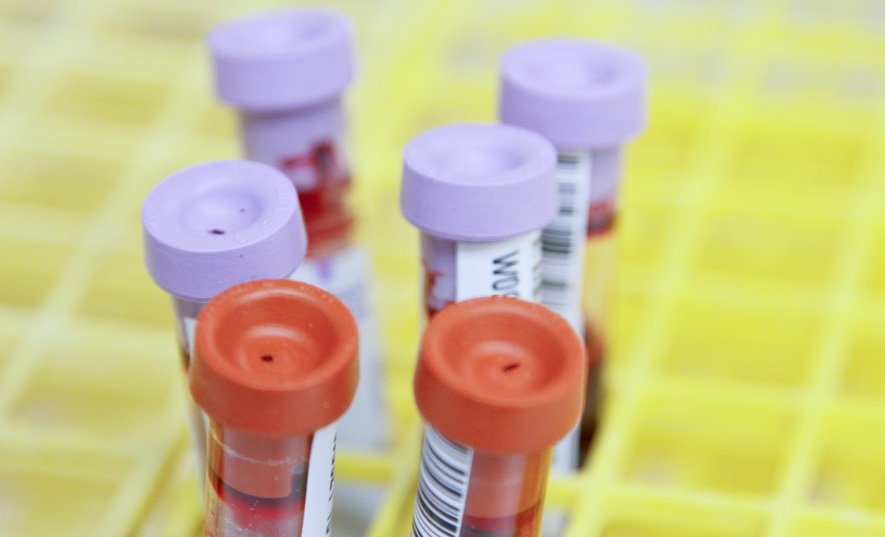April 21, 2022: “Results from a pooled analysis of Rezurock® (belumosudil) for the treatment of chronic graft-versus-host disease (cGVHD) show certain organ clinical responses correlated with clinically meaningful changes in patient-reported outcomes (PROs).
Kadmon, a Sanofi Company, will present the results at the 2022 American Society for Transplantation and Cellular Therapy (ASTCT) and the Center for International Blood & Marrow Transplant Research (CIBMTR) Tandem Meetings in Salt Lake City, Utah.
Jonathan Ieyoub
Head of Sanofi US Rezurock Medical
“These Rezurock data reinforce the importance of patient-reported outcome measures by showing their correlation to clinical response.
Knowing the impact that chronic graft-versus-host disease has on patients, the results add support for use of patient-reported outcomes to assess responses in clinical care.”
The pooled analysis of the ROCKstar (KD025-213) and KD025-208 studies demonstrates a very strong, but not universal, correlation between organ clinical response measures and clinically meaningful changes in PROs in patients treated with Rezurock.
In particular, the clinically meaningful changes in PROs were reported in the skin, mouth, eye, upper GI, lung (clinical lung scale score), and overall measures.
These data support use of PROs for response assessment in cGVHD clinical trials and patient care to help capture the patient’s perspective on cGVHD disease activity.
About the Pooled Analysis
The pooled analysis of clinical and PRO data included 170 (91.3%) patients enrolled in two Rezurock studies (n=132, KD025-213; n=54, KD025-208) who had baseline PROs, at least one follow-up PRO, and at least one response assessment.
The median age was 54.5 years, 98 (58%) were men, the median number of prior treatments was 3, 70% had severe cGVHD, and the median duration of follow-up at the time of data cut-off was 15 months (range, 0.6-44 months).
Organ responses, defined as complete responses (CR) and partial responses (PR), were 35% (48/135) in skin, 68% (84/124) in joints, 57% (56/99) in mouth, 41% (52/128) in eyes, 73% (19/26) in upper GI, 87% (13/15) in lower GI, 23% (14/61) in lungs, and 77% (130/170) overall.
For all organs except for joints, oesophagus, and lower GI there was at least one PRO that was statistically correlated at p<0.05 with National Institutes of Health (NIH) organ response. NIH clinical lung response, but not the lung response based on FEV1% change, was associated with the lung PRO.
| Correlation of NIH organ response (CR+PR) with clinically meaningful patient-reported outcomes (PROs) | ||||||
| Organ | Response measure | Clinically meaningful change | Patient-reported outcome | Clinically meaningful change | OR, 95% CI, for improvement in PRO predicting NIH response | p-value |
| Skin | NIH Skin score 0-3 | 1 pt | LSS skin scale 0-100 | 11 pts | 2.16 (1.12-4.16) | 0.021 |
| Sclerotic skin 0-10 | 2 pts | LSS skin scale 0-100 | 11 pts | 1.66 (0.91-3.01) | 0.098 | |
| Sclerotic skin 0-10 | 2 pts | Skin tightening 0-10 | 2 pts | 2.50 (1.28-4.87) | 0.007 | |
| Joint | P-ROM 4-25 | 2 pts | LSS single item joints 0-4 | 1 pt | 1.49 (0.84-2.66) | 0.175 |
| NIH joint score 0-3 | 1 pt | LSS single item joints 0-4 | 1 pt | 1.26 (0.73-2.20) | 0.408 | |
| Mouth | Oral mucositis rating scale | 2 pts | LSS mouth scale 0-100 | 13 pts | 6.36 (2.94-13.74) | <0.0001 |
| Oral mucositis rating scale | 2 pts | Mouth sensitivity 0-10 | 2 pts | 4.53 (2.25-9.09) | <0.0001 | |
| GI | NIH esophagus score 0-3 | 1 pt | LSS nutrition scale 0-100 | 7 pts | 1.32 (0.53-3.29) | 0.546 |
| NIH upper GI score 0-3 | 1 pt | LSS nutrition scale 0-100 | 7 pts | 4.44 (1.74-11.35) | 0.002 | |
| NIH lower GI score 0-3 | 1 pt | LSS nutrition scale 0-100 | 7 pts | 0.91 (0.27-3.05) | 0.878 | |
| Eye | NIH eye score 0-3 | 1 pt | LSS eye scale 0-100 | 15 pts | 3.39 (1.98-5.82) | <0.0001 |
| NIH eye score 0-3 | 1 pt | Worst eye compliant 0-10 | 2 pts | 2.35 (1.33-4.15) | 0.003 | |
| Lung | FEV1% | 10% | LSS lung scale 0-100 | 8 pts | 0.90 (0.43-1.87) | 0.779 |
| NIH lung score 0-3 | 1 pt | LSS lung scale 0-100 | 8 pts | 2.81 (1.70-4.65) | <0.0001 | |
| Overall | NIH responder CR+PR vs. nonresponder | LSS summary scale 0-100 | 7 pts | 1.89 (1.17-3.06) | 0.010 | |
| NIH responder CR+PR vs. nonresponder | Overall cGVHD 0-10 | 2 pts | 2.37 (1.48-3.77) | <0.001 | ||
| Overall severity 0-10 | 2 pts | LSS summary scale 0-100 | 7 pts | 1.84 (1.08-3.11) | 0.024 | |
| Overall severity 0-10 | 2 pts | Overall cGVHD 0-10 | 2 pts | 3.46 (2.17-5.52) | <0.0001 | |
| Pt, point; LSS, Lee symptom scale; GI, gastrointestinal; P-ROM, photographic range of motion |
About cGVHD
cGVHD is a complication that can occur following allogeneic stem cell transplantation, resulting in significant morbidity and mortality. In cGVHD, transplanted immune cells (graft) attack the patient’s cells (host), leading to inflammation and fibrosis in multiple tissues, including skin, mouth, eye, joints, liver, lung, oesophagus and gastrointestinal tract.
Approximately 14,000 patients in the United States are living with cGVHD.
About Rezurock® (belumosudil)
Rezurock® (belumosudil) is the first and only approved therapy inhibiting Rho-associated coiled-coil kinase 2 (ROCK2).
Rezurock is approved in the United States for the treatment of adult and pediatric patients 12 years and older with cGVHD after failure of at least two prior lines of systemic therapy.”
https://www.sanofi.com/en/media-room/press-releases/2022/2022-04-21-07-00-00-2426054


